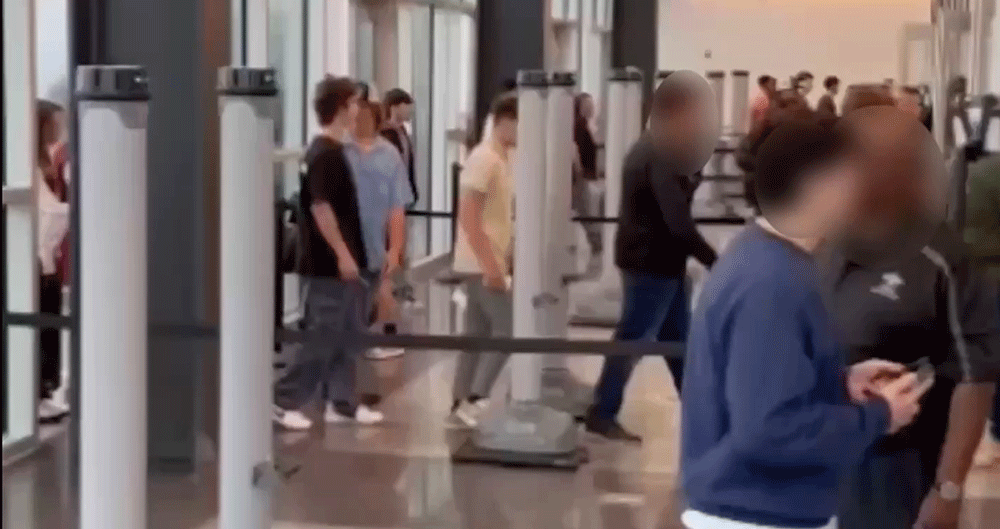When schools or hospitals consider implementing weapons detection systems to enhance campus safety, administrators play an important role in choosing the technologies and strategies that will best safeguard students, staff, patients and visitors. It is the responsibility of campus leaders to carefully assess these options to ensure that the solutions selected not only effectively address potential threats but also preserve a welcoming learning environment.
To help guide this critical decision-making process, here are seven key questions administrators should ask when exploring weapons detection systems.
1. How Does the Weapons Detection System Detect Concealed Weapons?
Administrators should assess the system’s underlying technology by asking:
- Does the system use advanced AI to enhance threat detection beyond metallic objects?
- Can it identify threats like firearms, knives, and other concealed objects, even when hidden in bags or under clothing?
- Can the system detect both ferrous and non-ferrous metals? Such as 3D-printed guns and knives
Consider X-ray with AI if your district is concerned with keeping out blades and sub-compact handguns. AI X-ray systems can process property approximately every 5-7 seconds and keep the line moving.
RELATED ARTICLE: 7 Signs a Weapon Is Being Concealed
2. Will the Weapons Detection System Be Efficient Without Disrupting Routines?
A key factor to consider is how the system impacts daily operations. Ask about its speed and ease of use and consider surveying parents and students to see if they would be willing to cooperate with safety protocols.
- How many students can the system screen in 15 minutes before the start of school?
- Will individuals be required to divest large metallic items while going through screening?
- How likely are parents and students to follow system protocols?
An advanced X-ray system that uses AI to analyze images and immediately identify threats can help to eliminate the need for manual bag checks and is ideal for students with multiple large metallic items like laptops, electronics, and instruments to ensure more completeness of search with less human effort.
While campuses must make these difficult decisions, know that the speed/security challenge is occurring on all levels. At the federal level for instance, the Department of Homeland Security is actively working to address this concern for airport travelers by utilizing High Definition-Advanced Imaging Technology to help meet the needs of passengers while also improving the speed and accuracy of threat detection. The trade-off between efficiency and security is a persistent challenge that requires ongoing assessment and innovation.
3. How Does the Campus Plan to Monitor and Respond to Alerts?
Even advanced systems require monitoring and response protocols. Administrators should ask:
- Who will oversee the system and manage alerts?
- Is the security team trained to respond swiftly to potential threats?
Rapid response is essential. A study in the Journal of School Violence shows that intervening within the first five minutes of an alert can reduce the severity of incidents by up to 70%.
RELATED ARTICLE: Weapons Detection in Schools and Healthcare: Experts Share 2025 Predictions
4. How Will the System Integrate With Visitor Management Protocols?
Weapons detection is most effective when paired with robust visitor management systems. Administrators should explore:
- Will the WDS integrate with a visitor management platform to know both who and what prohibited items are coming into the school?
- Will a child predator background check be required before a visitor can receive a badge to enter?
- Does the system offer a feature to enhance child safety during pickup that alerts parents with a notification and photo of the person picking up their child, allowing the parent to verify the person’s identity?
5. Can the Weapons Detection System Detect and Respond to Evasion Tactics?
Individuals intending harm may attempt to evade detection. An advanced WDS with evasion detection can recognize and address such attempts. Administrators should inquire about a system’s ability to:
- Identify suspicious behavior, such as avoiding detection zones.
- Alert security teams when someone tries to bypass the screening process.
- Monitor the entryway. (Is the operator at the entryway or assisting others while the entryway is exposed?)
- Does the district have a policy and compliance around unauthorized areas and access?
Proactive evasion features identify and address threats before they can escalate. The whole perimeter needs to be secure also.
6. How Does the Weapons Detection System Address Data Privacy and Bias?
Administrators must also consider the ethical and security implications of WDS technology. Systems that comply with SOC 2 (Service Organization Control 2) standards ensure that data handling meets rigorous privacy, security, and confidentiality benchmarks.
RELATED ARTICLE: More than 6 Guns Per Day Were Seized at U.S. Schools n 2022
Administrators should ask:
- Does the system store personal information? If so, how is it protected?
- What measures are in place to mitigate algorithmic bias and ensure equity in the screening process?
- Are the encryption keys used to encrypt client-side data protected against AI supercomputers and quantum computing decryption methods?
By choosing solutions that prioritize SOC 2 compliance, campuses help safeguard sensitive information while demonstrating a commitment to the ethical use of technology. Transparency in data handling builds trust and confidence among parents and the broader community.
7. What Is the Broader Safety Plan?
Finally, administrators should evaluate how weapons detection systems fit into the overall safety strategy. Consider:
- How the weapons detection system will fit within and integrate with a campus’ broader security framework.
- Complementary initiatives such as staff training and mental health support for students and staff.
A comprehensive approach to security demonstrates the district’s commitment to long-term safety, ensuring that physical security is complemented by preventive and supportive measures for students and staff.
No weapons detection system can guarantee 100% accuracy, but by addressing these seven questions, administrators can ensure the selected systems meet the highest standards of safety, efficiency, and ethical use. A thoughtful, proactive approach can help campuses create safer environments where children, faculty and staff are able to focus on the mission of learning.
Lisa Falzone is co-founder and President of Athena Security.
NOTE: The views expressed by guest bloggers and contributors are those of the authors and do not necessarily represent the views of, and should not be attributed to, Campus Safety.













